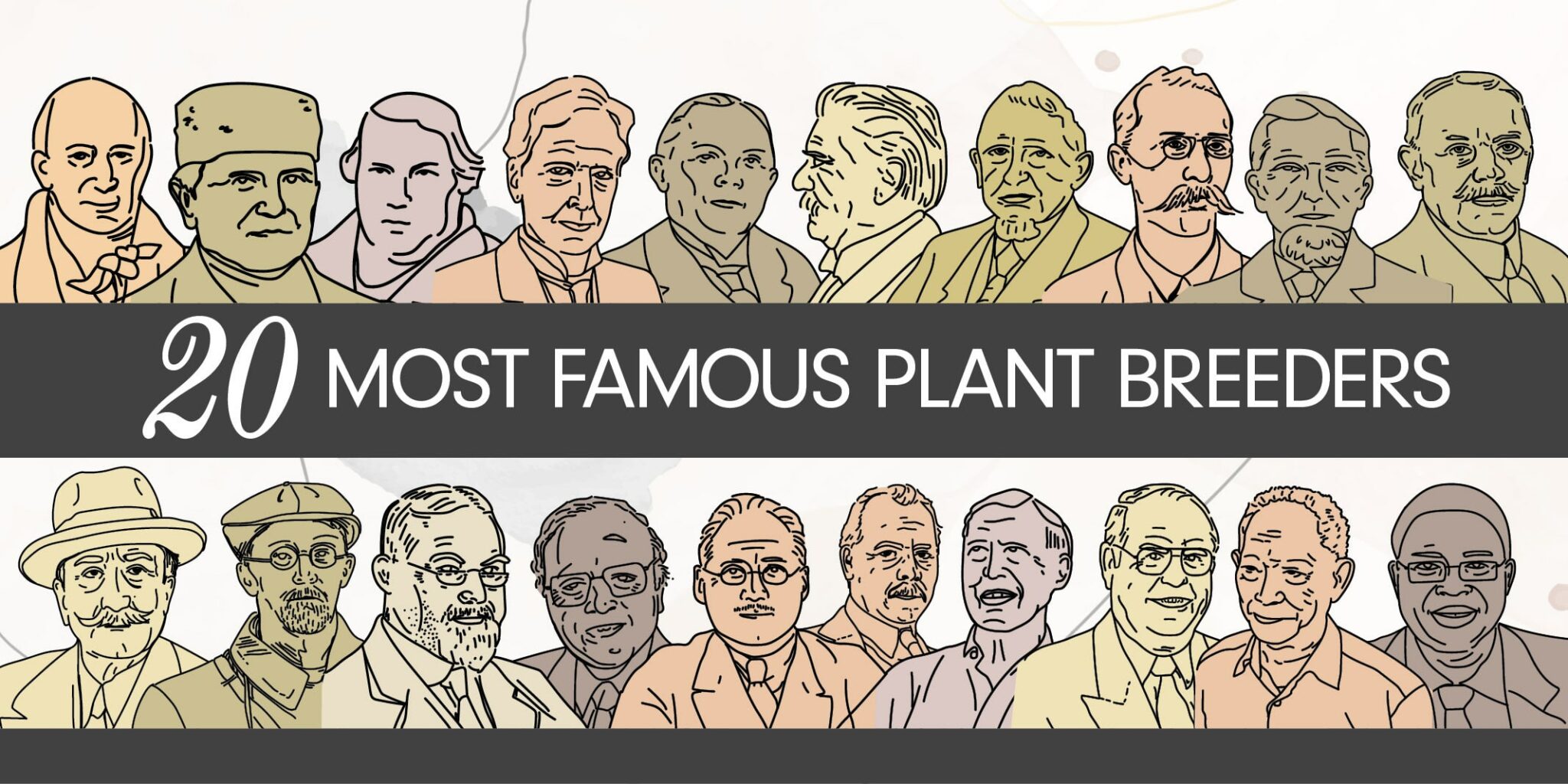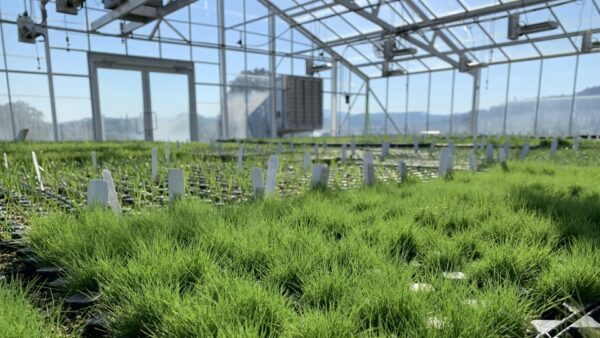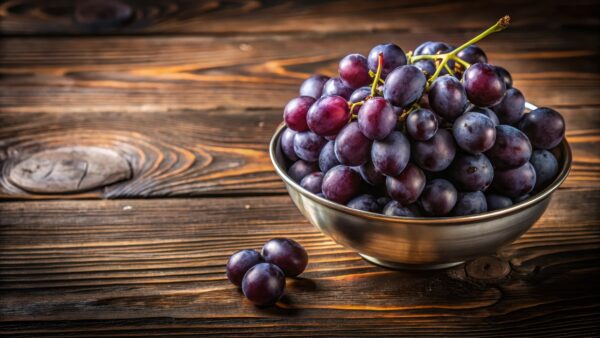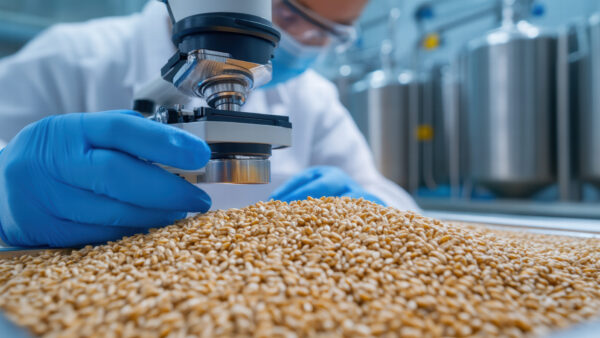Looking back after two centuries of Mendel
In the year where it has been two centuries since Gregor Mendel was born, it seems appropriate to look at some of the other people who have made a bigger than normal contribution to plant breeding and have enriched our world and our plates with new, better, higher yielding and more delicious plant varieties.
Nowadays, plant breeding is very much an interdisciplinary activity, with lots of input from other departments within a seed company, such as the plant pathology, molecular or marketing departments. But in the old days it was often a one-person job, and from time to time it is good to look back and see on whose shoulders we are standing. No doubt, there are many others that also deserve a spot in this list. Feel free to send us your proposals, and why those persons should be on the list as well.
Read parts two, three and four.
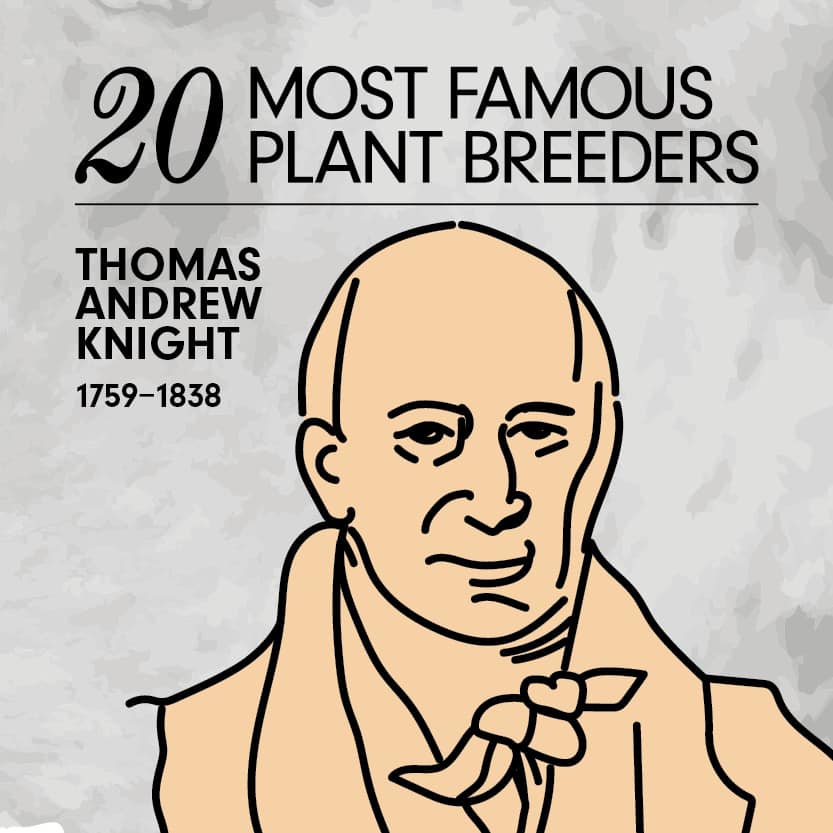
Thomas Andrew Knight (1759, 1838) – British horticulturalist and botanist
After graduation, he took up the study of horticulture. In 1795 he published the results of his research on the propagation of fruit trees and their diseases. His breeding experiments, between identified plant varieties, led to new apple varieties. He would select among hundreds of seedlings to pick out the few with improved characteristics. For example, the Siberian Harvey cider apple was among about four seedings he kept from 300 crosses. Distribution of Knight’s apple seeds and scions to the U.S. helped develop its apple industry. In the mid-19th century, the Downton strawberry, bred by Knight, was a popular strawberry in Britain, until it was eclipsed by modern strawberry hybrids at the turn of the century. It is not widely known that he studied variation in peas and made similar observations to Mendel, but he failed to make the same imaginative leap about the relationships between these changes.
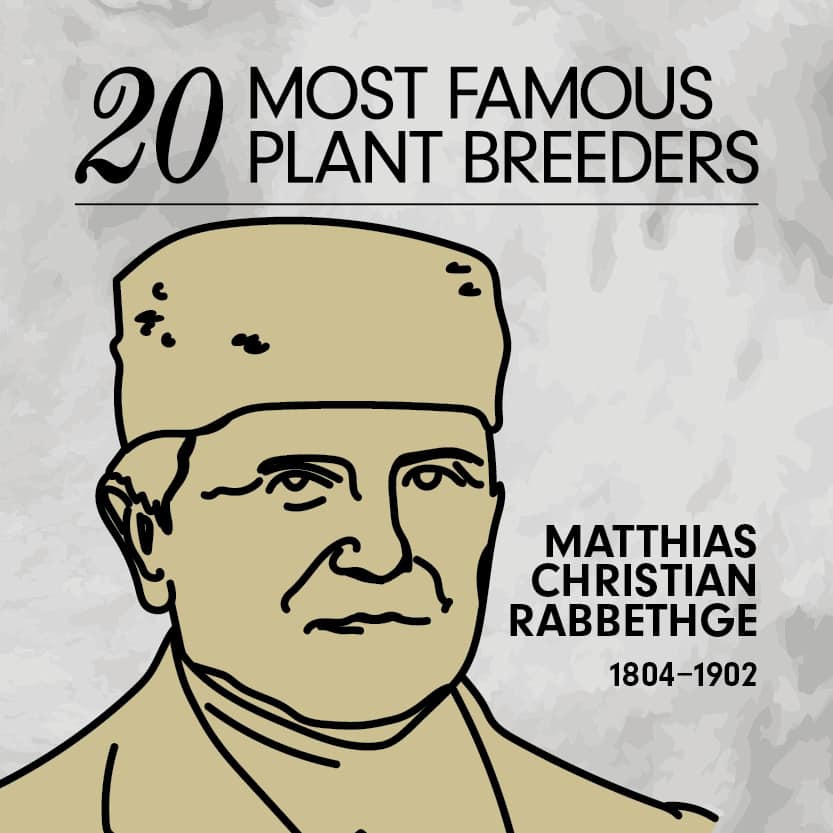
Matthias Christian Rabbethge (1804,1902), German plant breeder
With the purchase of a 212-acre (approx. 50 hectare) plot of land including shares in a sugar beet factory in Klein Wanzleben, Matthias Christian Rabbethge, the son of a farming family, laid the foundation stone for the successful linking of sugar production and sugar beet breeding in Germany as early as 1847. Rabbethge recognised that increasing the sugar content in the beet was a prerequisite for profitable sugar beet production. The ‘Klein Wanzlebener Original’ became one of the highest-yielding and most popular varieties. And as early as 1910, around a third of the world’s beet seed requirements were met from Klein Wanzleben. The Klein Wanzleben type is still the progenitor of almost all sugar beet varieties grown worldwide. His insights were later pursued by his sons, Matthias Jr and Karl, in systematic breeding trials and led to success. Throughout his life, Rabbethge was open to technical innovations and helped the Klein Wanzleben site to rise and become a global pioneer for high-performance sugar beet seed.
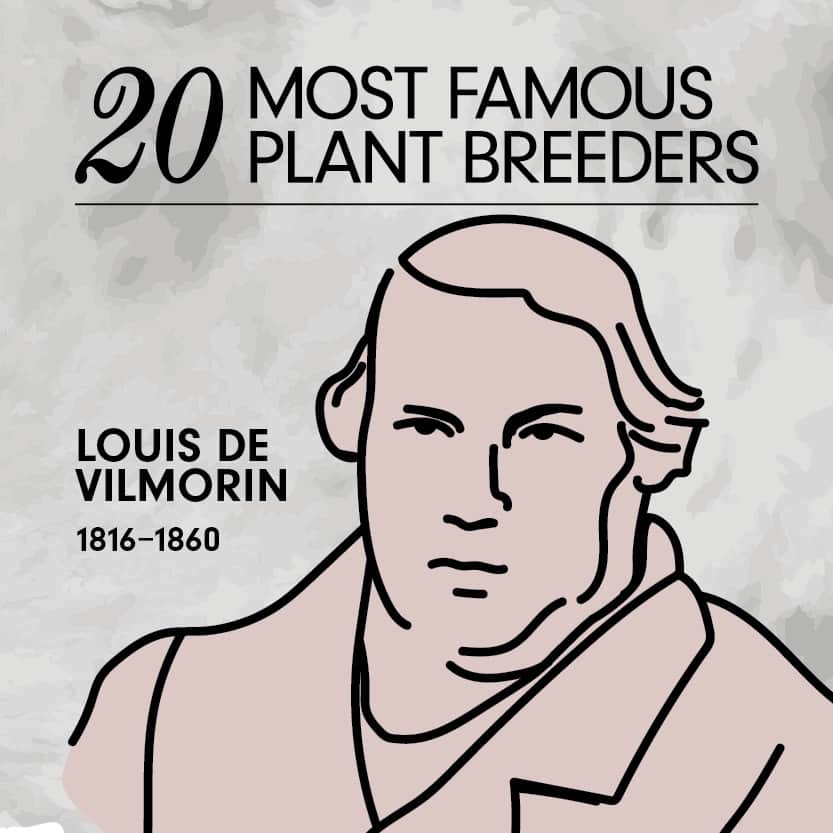
Louis de Vilmorin (1816-1860), French plant breeder
Vilmorin was founded as a plant and seed boutique in 1743 by seed expert Claude Geoffroy and her husband Pierre Andrieux, the chief seed supplier and botanist to King Louis XV. In 1774, their daughter married botany enthusiast Philippe-Victoire Levêque de Vilmorin (1746-1804). Together, they created the company Vilmorin-Andrieux.
The Vilmorin company produced the first seed catalogue for farmers and academics. In the long history of the Vilmorin family, the most prominent scientific figure was certainly Louis de Vilmorin. He formulated a small number of articles on plant breeding and a major part of the company’s success can be traced to the crucial work on selection and heredity carried out by him in the 1850s. In 1856, he published “Note on the Creation of a New Race of Beetroot and Considerations on Heredity in Plants”, establishing the theoretical groundwork for the modern seed-breeding industry.
From the middle of the 19th century, this family-owned company was among the most important seed companies in the world, particularly for cereals.
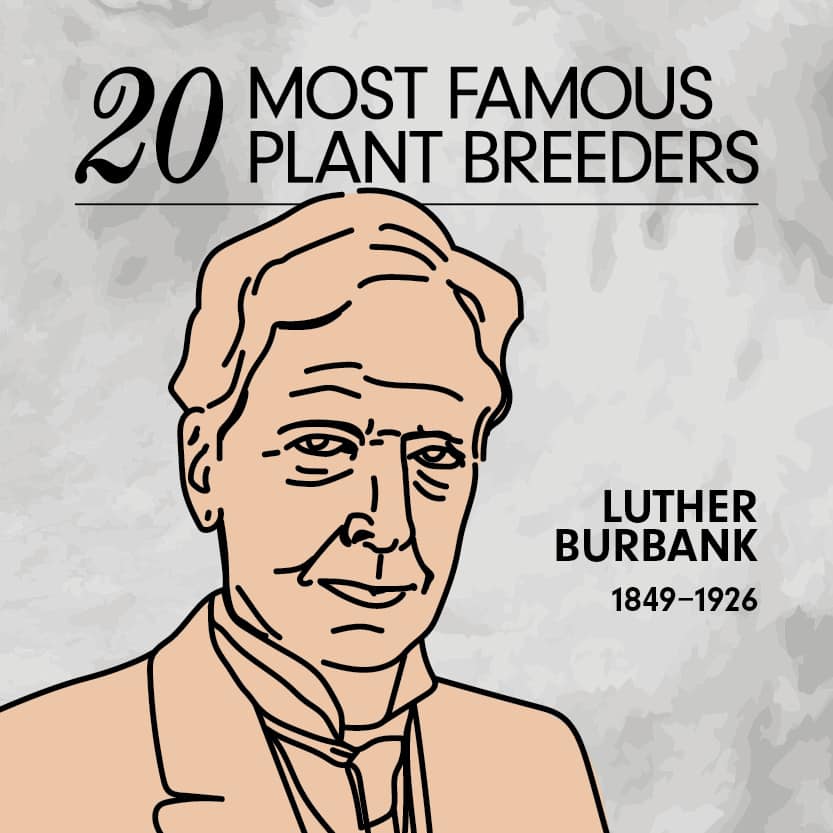
Luther Burbank (1849, 1926), U.S. plant breeder
Burbank was reared on a farm and received little more than a high school education. He was very interested in the works of Charles Darwin. At a young age he started a lifelong plant-breeding career. One of his earliest achievements is the ‘Burbank’ potato variety. The later variety ‘Russet Burbank’ is a mutation (or sport) of the cultivar ‘Burbank’.
He sold the rights to the potato for $150 and used that as travel fare to California, where he settled in Santa Rosa and established a nursery garden, a greenhouse, and experimental farms that were to become famous throughout the world.
Often in his breeding, he made multiple crosses of foreign and native germplasm. He also produced seedlings which were subsequently grafted onto fully developed plants to allow for a relatively quick appraisal of the hybrid characteristics. He had a talent for keen observation and often immediately recognized desirable characteristics. This allowed Burbank to quickly select useful new varieties.
Burbank developed more than 800 new strains and varieties of plants, including 113 varieties of plums, 20 of which are still commercially important, 10 commercial varieties of berries, and more than 50 varieties of lilies.
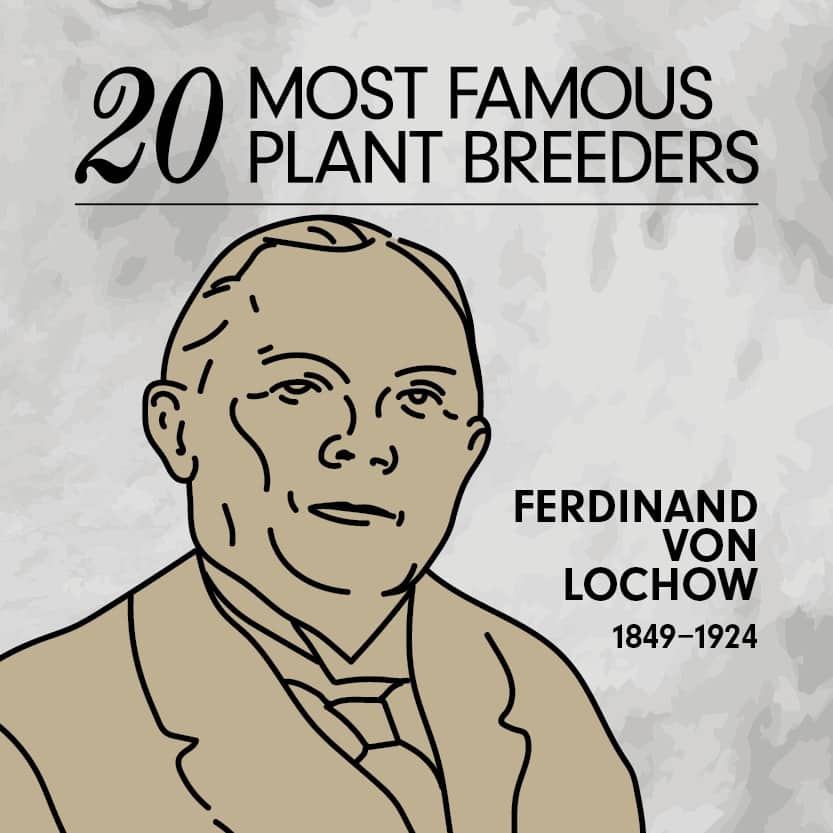
Ferdinand von Lochow (1849 – 1924), German plant breeder
With the drive to make the family-owned agricultural manor in Petkus more profitable, he devoted his entire life to increasing yields on the poor soils of the estate. After initial agricultural cultivation experiments, he decided to start systematic breeding of rye in 1881. While other breeders at that time selected mainly for individual traits such as large grains, Lochow’s standard for selecting good individual plants was a combination of various traits such as winter hardiness, a full spike and uniformly large and round grains. The “Petkus winter rye” bred in this way already showed a remarkable superiority in yield of up to 11 per cent compared to the reference varieties in the variety trials started in 1891. The resulting increase in demand for Lochow’s varieties could only be achieved with the help of selected farmers who were hired for seed multiplication. In addition to rye, he also cultivated potatoes, oats and flax, and later even lucerne, maize and pine.
Read Past 20 Most:
The 20 Most Climate Friendly Companies Over 2021
The 20 Most Innovative Plant Varieties of 2020
20 Most Innovative Breeders in the European Seed Sector in 2019
20 Most Influential People in the European Seed Sector in 2018


